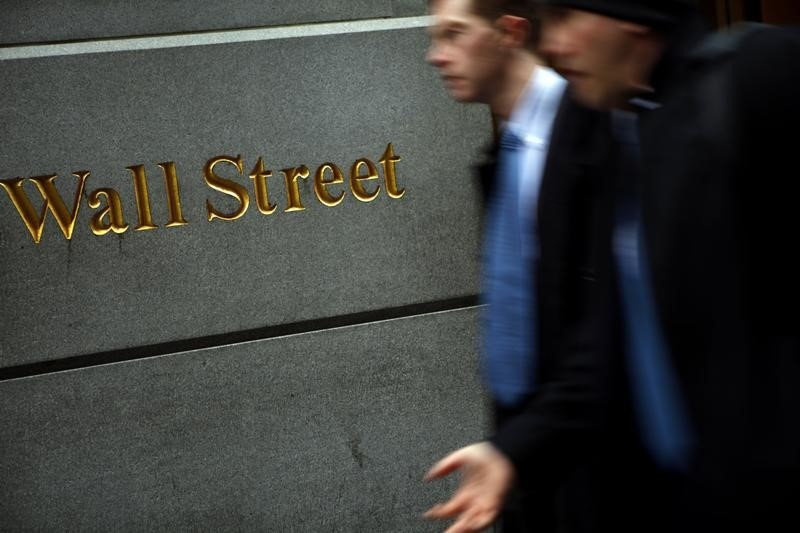Street Calls of the Week
Investing.com -- Markets gear up for an all-important Federal Reserve policy meeting this week, with comments from Fed Chair Jerome Powell likely to play a key role in expectations for possible future interest rate cuts by the U.S. central bank. Elsewhere, Cigna (NYSE:CI) reportedly ends talks to merge with rival Humana (NYSE:HUM), abandoning a deal that would have created a $140 billion insurance giant.
1. Futures mostly hug flatline
U.S. stock futures were widely muted on Monday as investors looked ahead to a much-anticipated Federal Reserve policy meeting later in the week.
By 05:02 ET (10:02 GMT), the Dow futures contract and S&P futures were broadly unchanged, while Nasdaq 100 futures had shed 17 points or 0.1%.
Both the benchmark S&P 500 and tech-heavy Nasdaq Composite posted their highest closing levels since early 2022 in the prior session, while the 30-stock Dow Jones Industrial Average notched its sixth consecutive weekly gain -- its longest streak of positive weeks since 2019.
A batch of jobs market data on Friday buoyed hopes that the Fed might be able to engineer a so-called "soft landing" for the U.S. economy. In this scenario, the central bank's aggressive string of interest rate hikes -- which have pushed borrowing costs up to more than two-decade highs -- would succeed in quelling elevated inflation without triggering a broader economic meltdown.
Figures showed that nonfarm payrolls increased by more than anticipated in November, average hourly earnings growth inched up on a monthly basis, and the unemployment rate dipped. Although the numbers pointed to a resilient labor market that could push up wages and inflation, they were more widely interpreted as a signal that the Fed's tightening cycle may not plunge the world's largest economy into recession.
2. Goldman estimates two Fed rate cuts in 2024
Analysts at Goldman Sachs have predicted that Fed policymakers will slash interest rates twice by the end of next year and advanced the anticipated timing of the first cut to the third quarter.
Citing "better inflation news," the brokerage said in a note to clients dated Dec. 10 that the reductions could now "come a bit earlier." Goldman had previously estimated that the initial cut would take place next December.
In the wake of last week's jobs data and separate figures showing the slowest annual rise in underlying price gains in two years in October, markets are now pricing in a nearly 50% chance of a quarter-point rate decrease in borrowing costs from their current range of 5.25% to 5.50% as soon as May, according to Investing.com's Fed Rate Monitor Tool. The probability of a cut at the Fed's March meeting stands at a little under 43%, down from 53% in the prior week.
The Federal Open Market Committee is tipped to keep rates steady on Wednesday following its final two-day gathering of 2023. Much of the focus will likely be on comments from Fed Chair Jerome Powell, as he faces pressure to lay out a timeline for future rate cuts. Powell, who has stressed that the Fed will only move "carefully," is expected to attempt to give the bank some flexibility with its upcoming decisions.
3. Cigna abandons Humana merger plans
U.S. health insurer Cigna has ended its drive to acquire peer Humana, according to multiple media reports, pulling the plug on a deal that would have created an insurance behemoth worth over $140 billion.
The reports said neither Cigna nor Humana could agree on financial arrangements, while concerns also swirled around the intense regulatory scrutiny that the tie-up would likely have raised. Competition authorities have quashed similar moves to consolidate the U.S. health insurance industry in the past.
The abandoned talks come as Connecticut-based Cigna announced that it is aiming to roll out an additional $10B in share buybacks. In a statement, Chairman David Cordani argued that the company's shares are "significantly undervalued and repurchases represent a value-enhancing deployment of capital."
Shares in Cigna were higher in U.S. premarket trading on Monday.
4. Chinese stocks mixed amid deflation concerns
China’s blue chip Shanghai Shenzhen CSI 300 index rose 0.6% on Monday after touching its weakest level since early-2019, while the Shanghai Composite edged up and Hong Kong’s Hang Seng dipped by 0.9%.
Data released over the weekend showed that Chinese consumer prices fell at their fastest pace in three years in November, weighed down in particular by declining food costs. Producer prices also sank for a 14th consecutive month.
The readings suggested that a post-pandemic rebound in Chinese spending remained sluggish despite continued liquidity measures from Beijing -- a trend that bodes poorly for the world's second-largest economy. China has now been in deflationary territory for two consecutive months, heralding little pick-up in growth in the coming months.
Officials have vowed to do more to provide both fiscal and monetary support, with China's leader Xi Jinping warning in recent days that the country's recovery is now at a "critical stage."
5. Oil prices slip with Fed meeting ahead
Oil prices moved slightly lower on Monday, in a sign of caution among traders prior to the Fed's gathering.
By 05:01 ET, Brent oil futures expiring February were down 0.3% at $75.59 a barrel, while West Texas Intermediate crude futures had slipped by 0.4% to $71.17 per barrel.
Crude prices were nursing seven straight weeks of losses after disappointing production cuts by the Organization of the Petroleum Exporting Countries and its allies including Russia, while weak economic prints from top importer China also exacerbated worries over demand.
But the strong U.S. nonfarm payrolls data on Friday spurred some optimism over the outlook for crude demand in the world's largest fuel importer.
